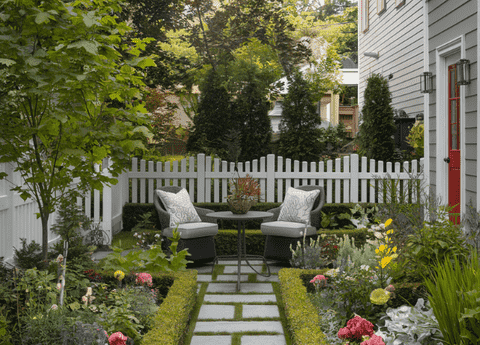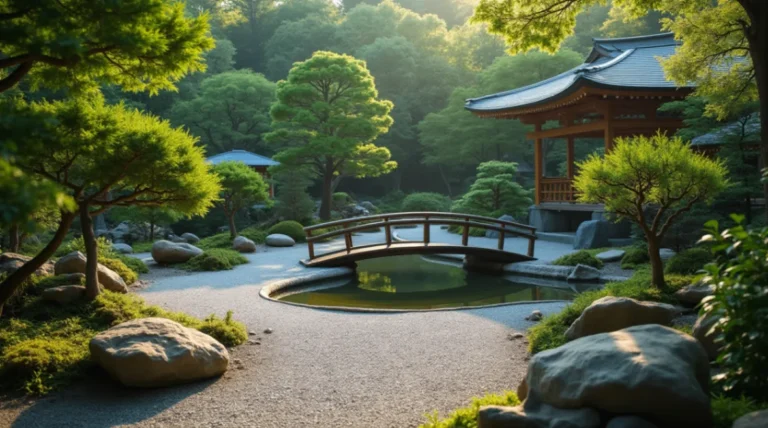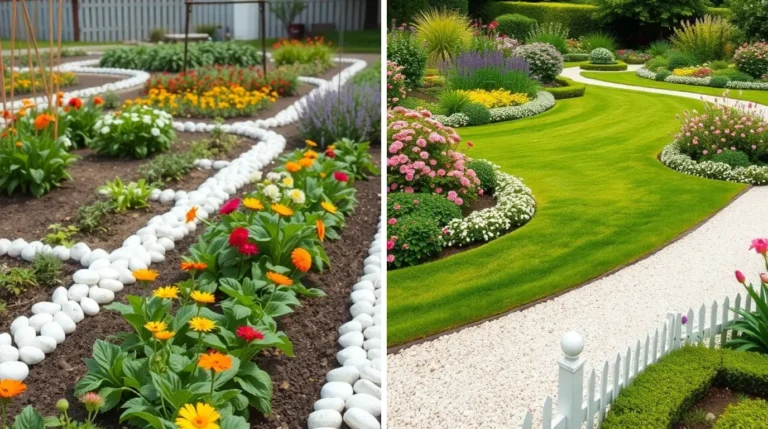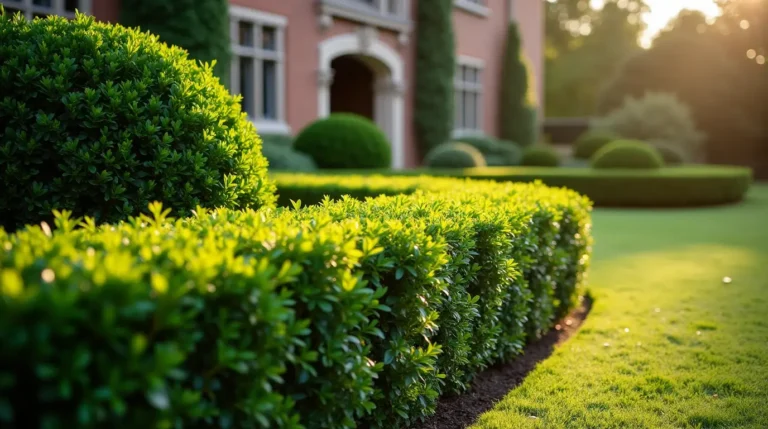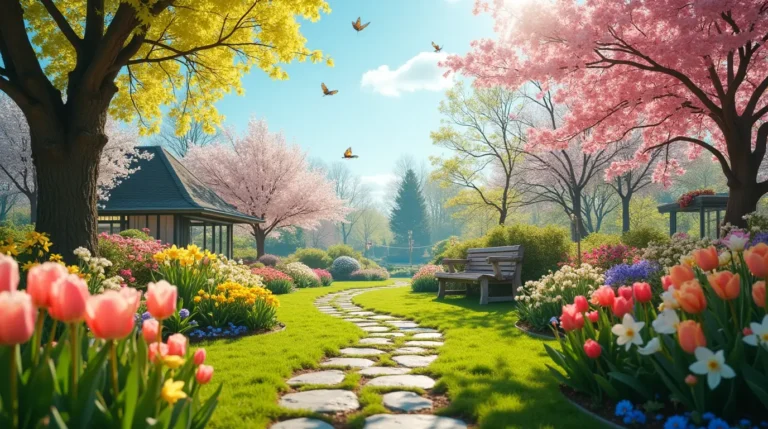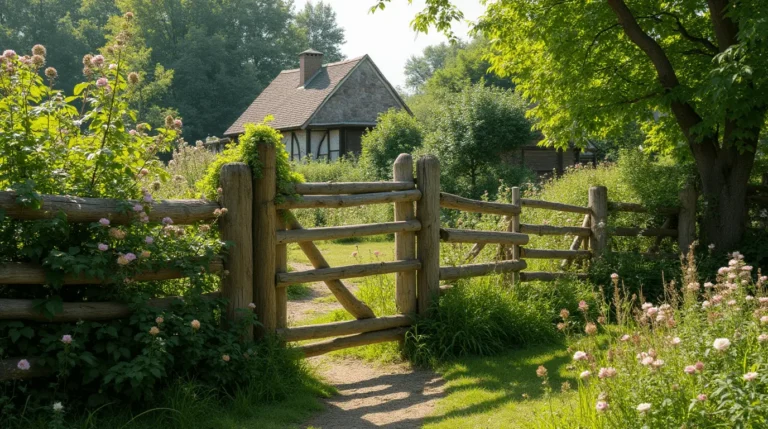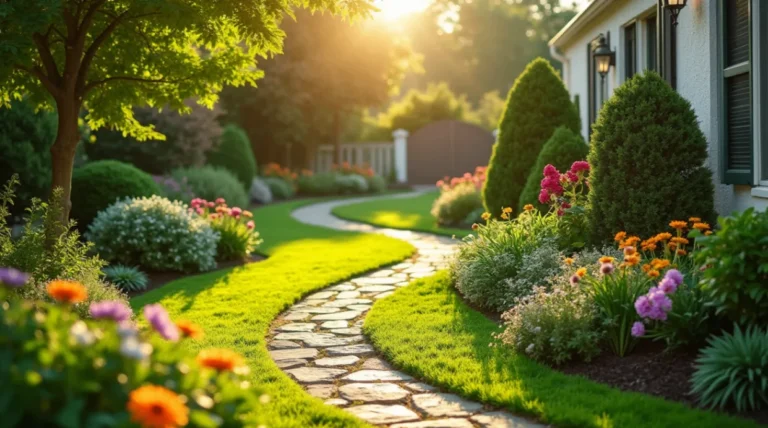Landscaping 101: Your Complete Guide to Creating a Beautiful Outdoor Retreat
Landscaping is more than just planting trees and mowing lawns; it is the art of designing and creating outdoor spaces that are functional, beautiful, and sustainable. Whether you’re looking to enhance the aesthetics of your backyard, create a relaxing environment, or add value to your property, effective landscaping can make a significant difference. This article will provide you with an in-depth look at the principles, benefits, and various elements involved in landscaping.
What is Landscaping?
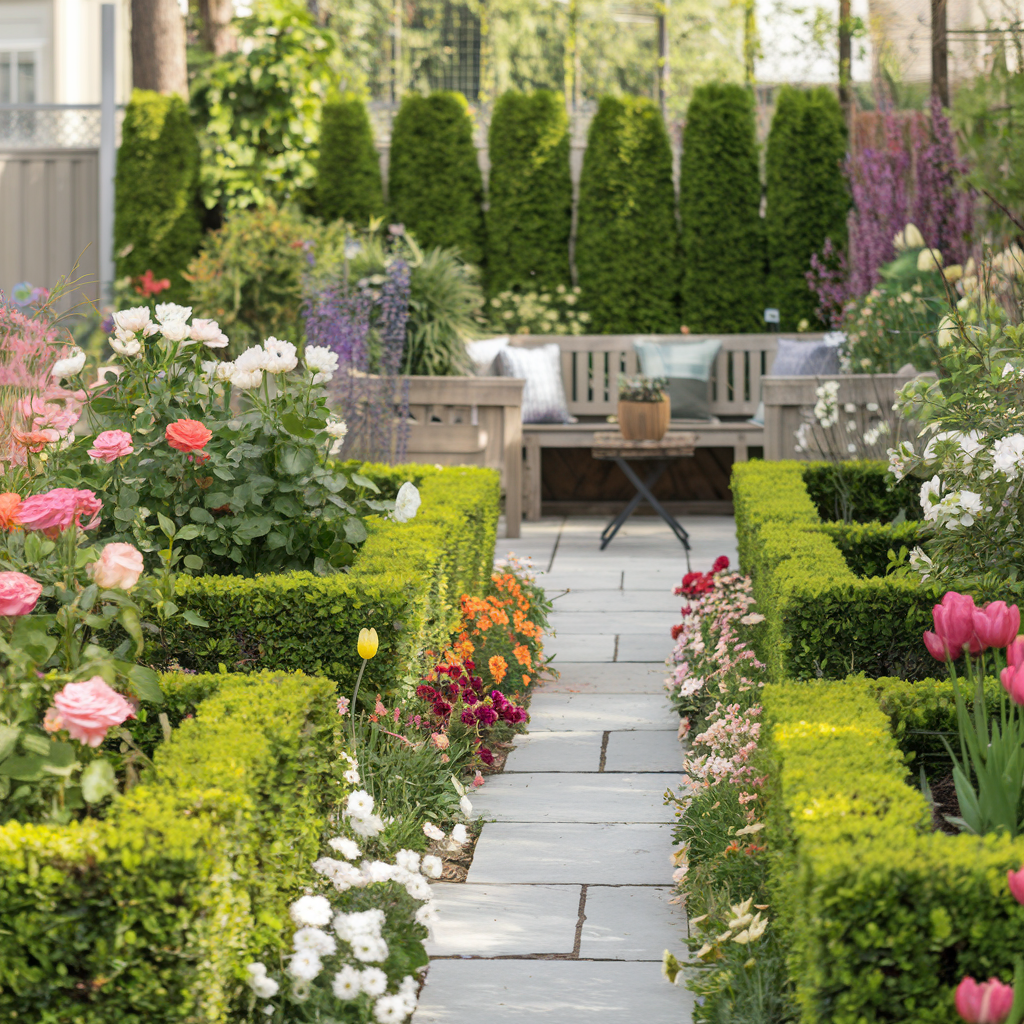
Landscaping refers to the planning, designing, and execution of outdoor spaces, encompassing everything from gardens and lawns to patios, walkways, and water features. It involves a combination of both softscape (plants, flowers, trees) and hardscape (paved areas, stone walls, outdoor furniture) elements. The goal of landscaping is to create harmony between natural and constructed features, resulting in a cohesive and visually appealing outdoor environment.
Benefits of Landscaping
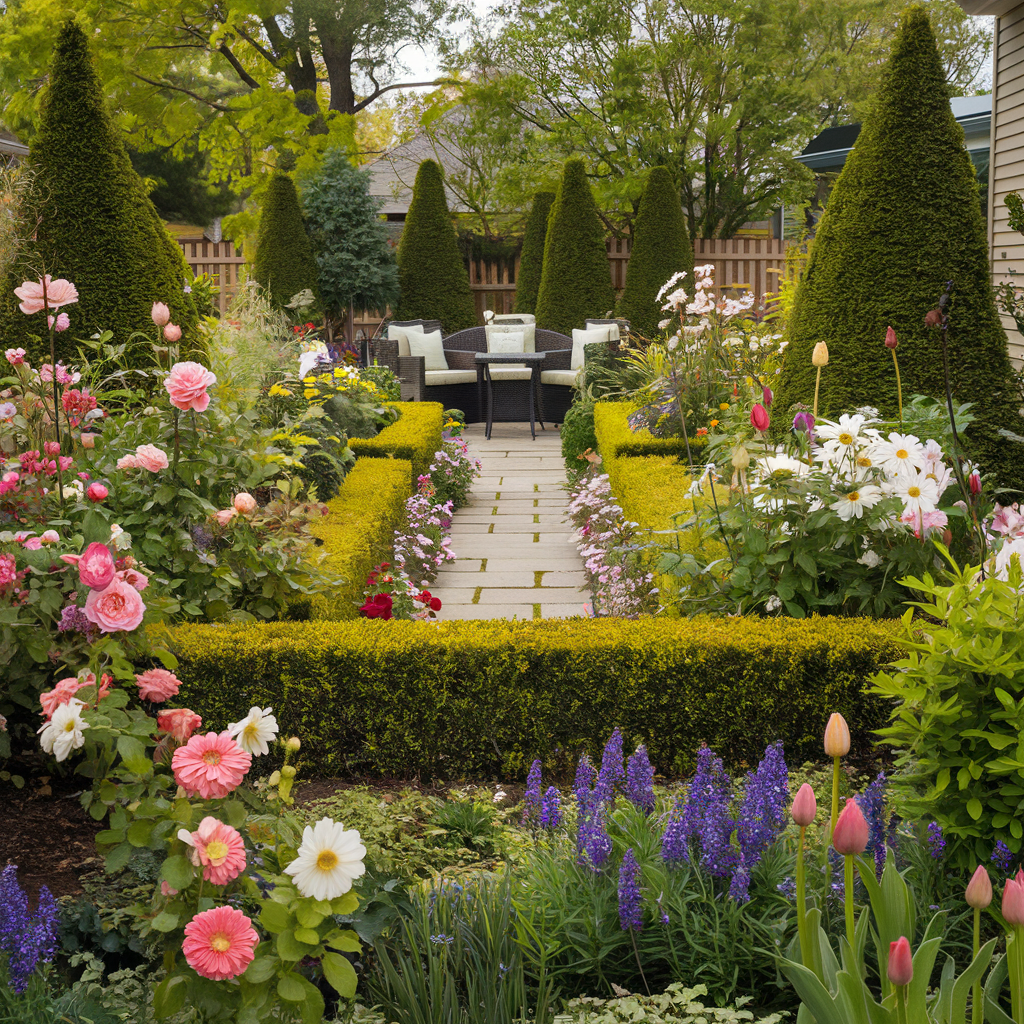
- Enhanced Aesthetic Appeal
A thoughtfully designed landscape can significantly enhance the appearance of your property. Whether it’s a colorful flower bed, a manicured lawn, or a modern patio, landscaping adds beauty and character to your space. - Increased Property Value
Professionally landscaped properties can see an increase in value by as much as 15%. This is because landscaping not only beautifies a space but also creates functional areas, making it a valuable investment. - Environmental Benefits
Proper landscaping can reduce soil erosion, provide natural cooling, improve air quality, and create habitats for local wildlife. The strategic placement of trees and shrubs can also help conserve energy by shading buildings in the summer and blocking wind in the winter. - Improved Mental and Physical Health
Being surrounded by greenery and nature has been proven to reduce stress, improve mood, and encourage physical activity. Well-designed landscapes offer a peaceful place to relax and unwind.
Key Elements of Landscaping
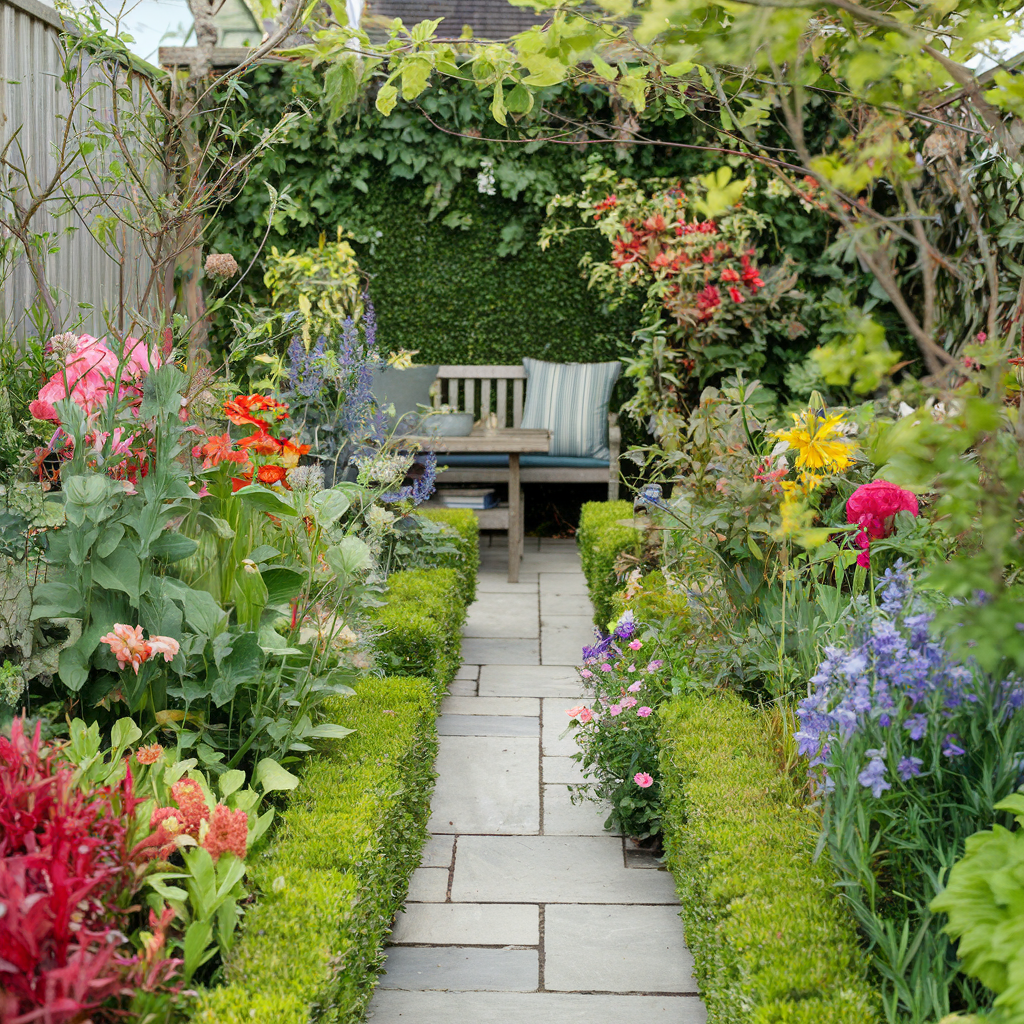
- Design and Layout
The first step in landscaping is to create a design that suits your space, needs, and style. This involves mapping out various zones, such as seating areas, gardens, and walkways. The layout should consider factors like the amount of sunlight, wind patterns, and drainage. - Plant Selection
Choose plants that are suitable for your climate, soil type, and desired look. Consider native species, as they tend to be more resilient and require less maintenance. Incorporate a variety of textures, colors, and heights to create depth and visual interest. - Hardscaping Features
Hardscaping includes non-living elements such as stone pathways, retaining walls, decks, patios, and water features. These features add structure and definition to your landscape, making it functional and visually appealing. - Lighting
Outdoor lighting is crucial for setting the mood and maintaining safety. Use soft lighting to highlight plants and pathways or install spotlights to illuminate specific features like trees or sculptures. - Water Features
Adding a water feature, such as a fountain, pond, or small waterfall, can bring a sense of tranquility to your landscape. Water elements can serve as focal points and attract birds and other wildlife, adding life to your garden. - Sustainability Considerations
Sustainable landscaping involves practices that are environmentally friendly, such as using drought-resistant plants, minimizing water usage, and incorporating organic materials. This approach not only benefits the environment but also reduces maintenance costs.
Tips for Successful Landscaping
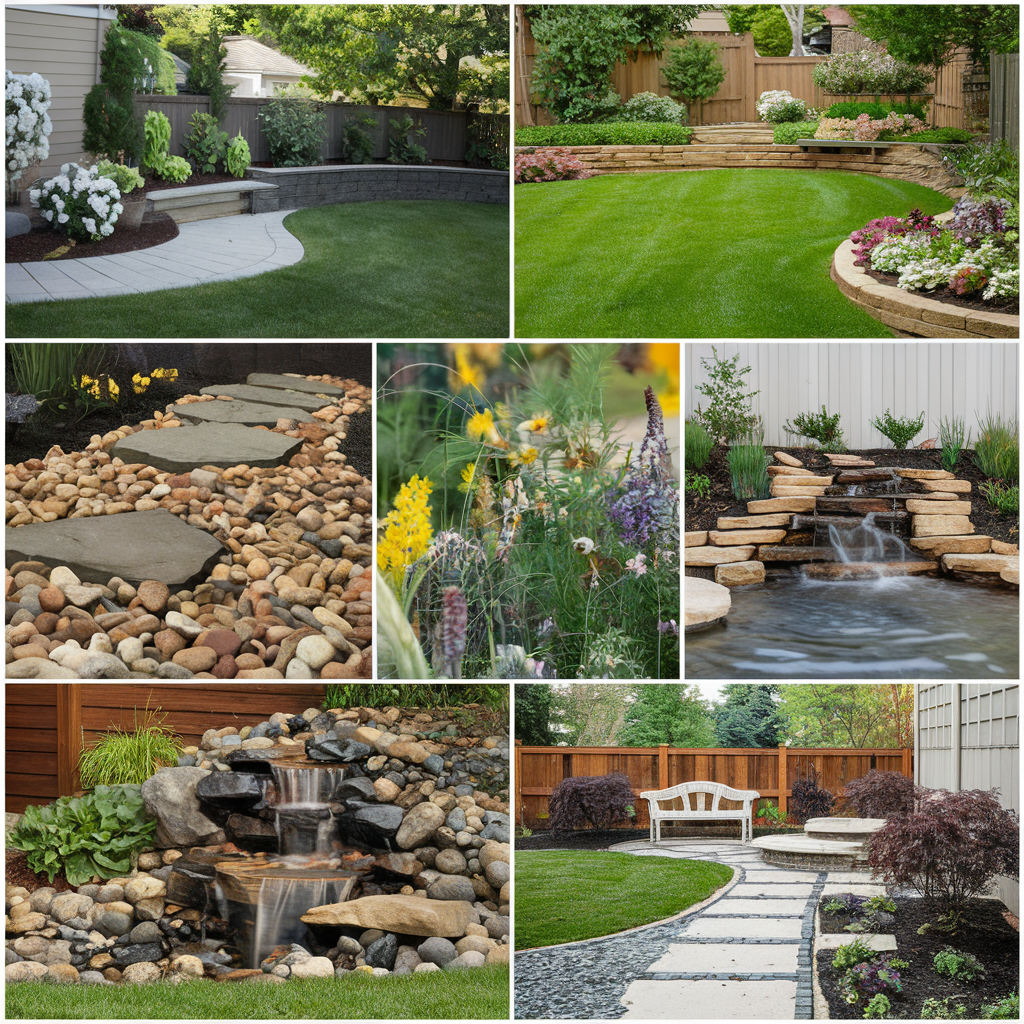
- Start with a Plan
Before beginning any landscaping project, create a detailed plan. Sketch your layout, list the materials you need, and set a budget. Having a clear vision will help guide your project and prevent costly mistakes. - Consider Functionality
Consider how you envision utilizing your outdoor space. If you enjoy entertaining, consider a spacious patio or deck. If you have children, include open areas for play. Your landscape should be as functional as it is beautiful. - Balance Softscape and Hardscape
A balanced landscape includes a mix of both soft and hard elements. Too many plants can create a cluttered look, while too much hardscape can make the space feel cold and uninviting. Find a harmonious blend that suits your style. - Regular Maintenance
Landscaping is an ongoing commitment that demands regular care and maintenance. Regularly prune trees, mow the lawn, and clean hardscape features to keep your landscape looking its best.
Landscaping Trends to Consider
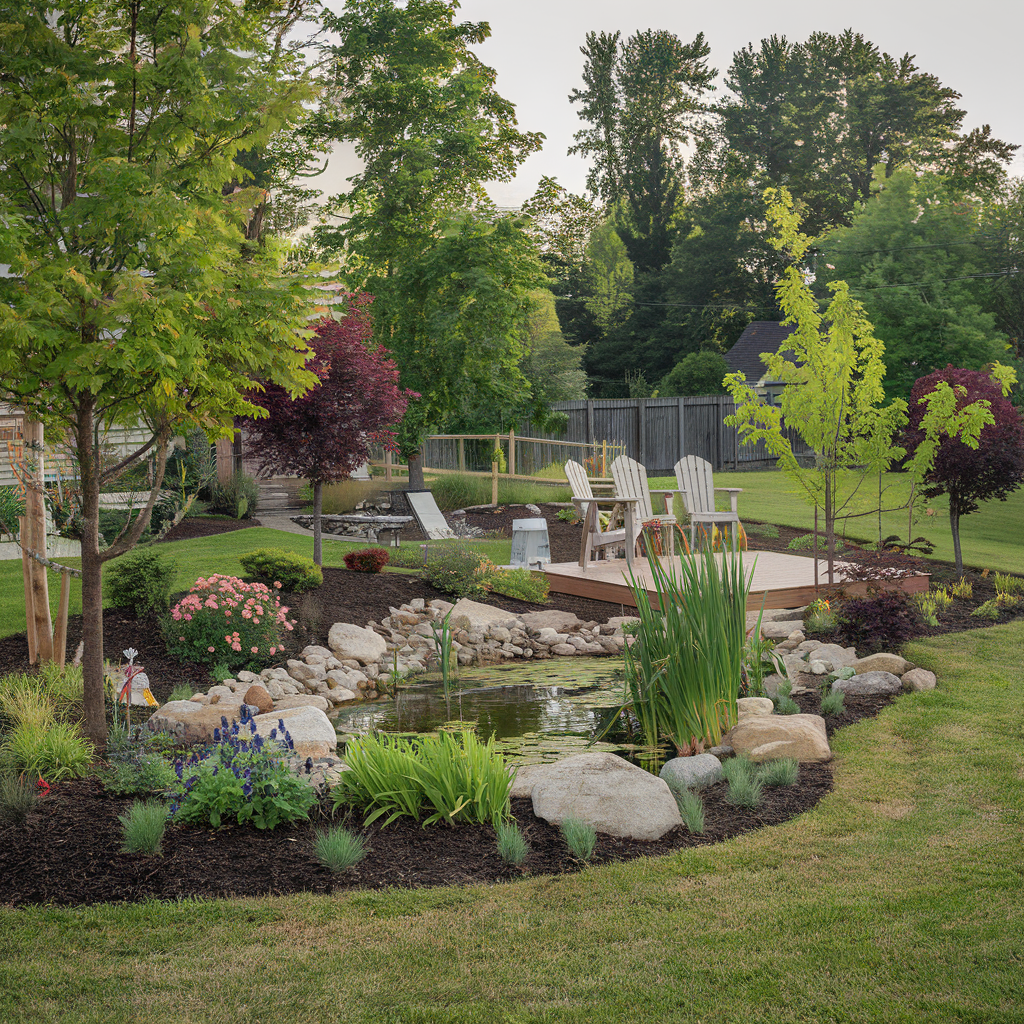
- Edible Landscaping
Incorporating edible plants like herbs, vegetables, and fruit trees into your landscape not only adds beauty but also provides fresh produce. - Low-Maintenance Gardens
Busy homeowners are opting for low-maintenance landscaping, using native plants, ground covers, and mulch to reduce the need for frequent watering and weeding. - Outdoor Living Spaces
More people are transforming their backyards into outdoor living areas, complete with kitchens, dining spaces, and even fireplaces, to create a seamless indoor-outdoor experience. - Vertical Gardens
Vertical gardens are a popular option for small spaces, allowing homeowners to grow flowers, herbs, or even vegetables on walls and trellises.
Conclusion
Landscaping is a rewarding endeavor that combines creativity, functionality, and sustainability. By thoughtfully planning and executing your landscape design, you can transform any outdoor space into a beautiful, functional, and harmonious environment. Whether you’re a homeowner looking to improve your garden or a property developer creating public spaces, understanding the principles and benefits of landscaping will help you achieve stunning results.

